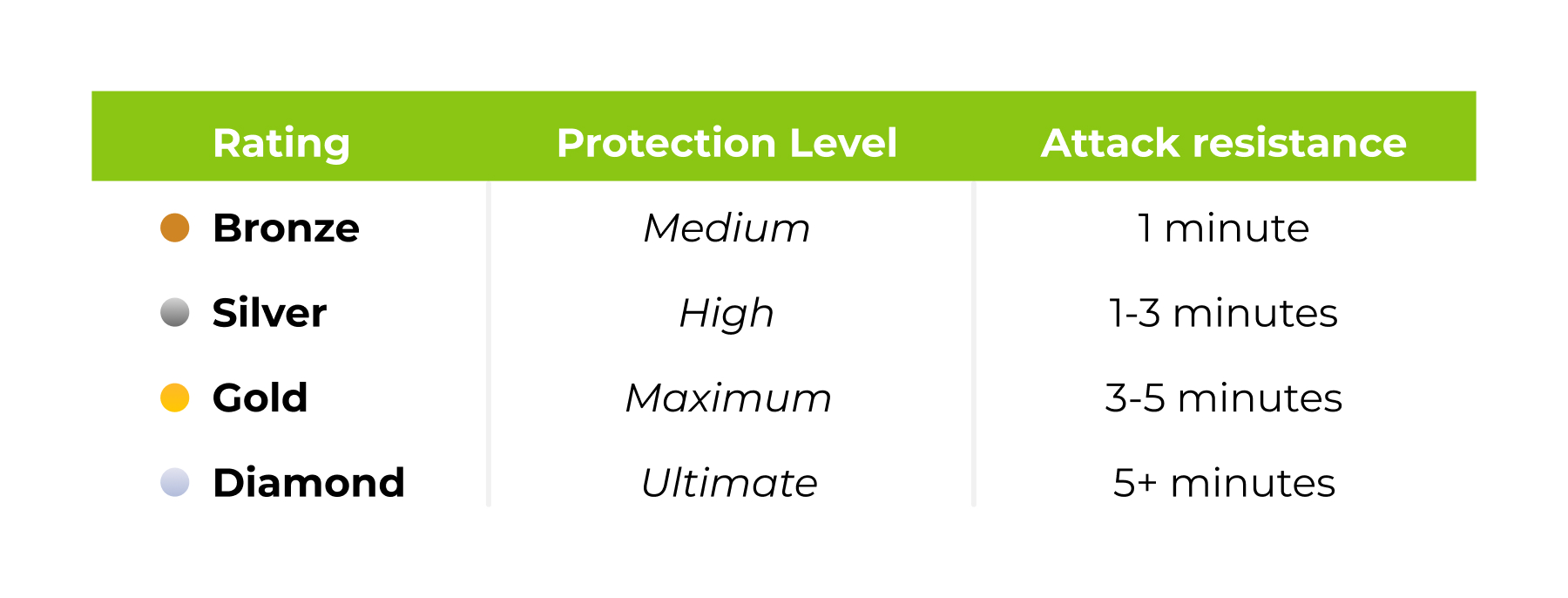In 2024, more than half of our new customers paid less than £7.85 per month* Read more
Cycleplan policies are provided on the basis that bikes left unattended are secured to an immovable object using an approved bike lock.
What classes as an approved bike lock?
At Cycleplan, our approved bike locks must either be Sold Secure rated or Thatcham approved. But what does this actually mean?
Sold Secure rated locks
Sold Secure is a testing certification for security products such as locks. Locks are graded either Bronze, Silver, Gold or Diamond based on how long it would take a thief to break into it.

The higher the Sold Secure rating, the higher the level of security the lock will provide. So, when choosing a bike lock, you must pick one with at least the minimum security rating required for the bike’s insured value.
Thatcham Approved bike locks
Like Sold Secure, Thatcham is another certification given to security devices. Thatcham testing is carried out by independent security experts, and devices are categorised from 1-7 based on their quality.
Recommended bike locks
Click the category below for the full list of Sold Secure locks.
Bronze
Bike value less than £500
Bronze rated locks typically offer defence against the opportunistic thief. For bicycles with an insured value of less than £500, we require you to use a Bronze rated lock.
Silver
Bike value less than £1,000
Silver rated locks offer a higher level of security and resist the more determined thieves. For bicycles with an insured value of less than £1,000, we require you to use a Silver rated lock.
If you already have a lock and it doesn’t state the Sold Secure rating on the packaging, you can search for all current Sold Secure approved locks on the Sold Secure website.
Common bike lock types
Approved bike locks come in a variety of shapes, sizes and specifications. Common types you may encounter include:
- D-Locks (or U-Locks)
- Chain Locks
- Cable Locks
- Folding Locks
As a responsible bike owner, you must ensure your bike is locked whenever you leave it unattended, even if it’s only for a short amount of time.
Should you ever need to make a theft claim, you’ll be asked to provide proof of your bike lock. This may include but is not limited to the original purchase receipt, bank or credit card statement, packaging, or a photograph clearly showing the lock make and model—so remember to keep these items safe in case you ever need them!
Evidence should clearly show the date, price paid, and details of the bicycle, accessories and approved lock.
Check out some of our great reviews


